Top 6 Wildlife Destinations in Rajasthan, renowned for its rich heritage, also offers captivating wildlife destinations. Prominent among these is Ranthambore National Park, a former royal hunting ground now famous for its Bengal tigers. Visitors can also spot leopards, deer, and numerous bird species. Sariska Tiger Reserve, another key destination, boasts a similar array of wildlife, nestled in the Aravalli hills.
Keoladeo National Park, a UNESCO World Heritage Site, is a birdwatcher’s paradise with over 370 species, including migratory birds like the Siberian crane. Desert National Park, near Jaisalmer, offers a unique desert ecosystem home to the Great Indian Bustard, foxes, and eagles.
Mount Abu Wildlife Sanctuary, in the state’s only hill station, features diverse flora and fauna, including the sloth bear and leopard. Tal Chhapar Sanctuary, known for its blackbuck population, provides a contrast with its grassland ecosystem Top 6 Wildlife Destinations in Rajasthan.
These wildlife destinations not only highlight Rajasthan’s biodiversity but also offer immersive experiences in the state’s natural beauty, making them essential visits for nature enthusiasts and wildlife photographers.
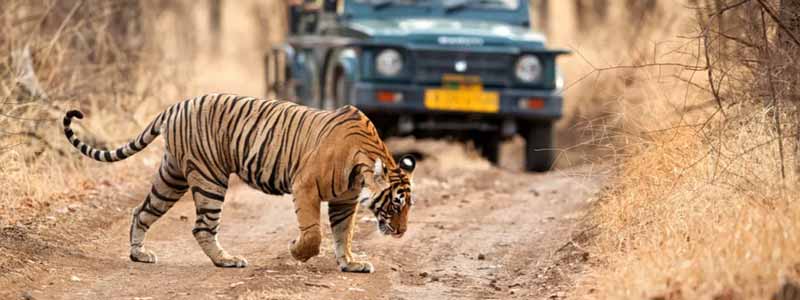
Ranthambore National Park
Location: Near Sawai Madhopur
Highlights: Famous for its Bengal tigers, Ranthambore is one of the best places in India to see these majestic animals in their natural habitat. Other wildlife includes leopards, sloth bears, and various bird species. The park also features the historic Ranthambore Fort.
Ranthambore National Park, situated in the Sawai Madhopur district of Rajasthan, is one of India’s most renowned wildlife reserves. Spanning approximately 392 square kilometers, it is famed for its substantial population of Bengal tigers, making it one of the best places in the world to spot these majestic creatures in their natural habitat. The park’s diverse terrain, encompassing dense forests, open grasslands, and rocky ridges, provides an ideal environment for a wide variety of wildlife.
Apart from tigers, Ranthambore is home to leopards, sloth bears, wild boars, sambar deer, and a plethora of bird species, including kingfishers, owls, and eagles. The park also hosts several lakes, such as Padam Talao and Rajbagh Talao, which attract crocodiles and various aquatic birds.
A key attraction within the park is the historic Ranthambore Fort, a UNESCO World Heritage Site, dating back to the 10th century. The fort offers panoramic views of the surrounding landscape and adds a cultural dimension to the wildlife experience.
Safari tours, available in both jeeps and larger canter vehicles, provide visitors with the opportunity to explore the park and observe its wildlife up close. Ranthambore’s accessibility from major cities like Jaipur and Delhi, along with its rich biodiversity and historical significance, makes it a must-visit destination for nature lovers and wildlife enthusiasts, Top 6 Wildlife Destinations in Rajasthan.
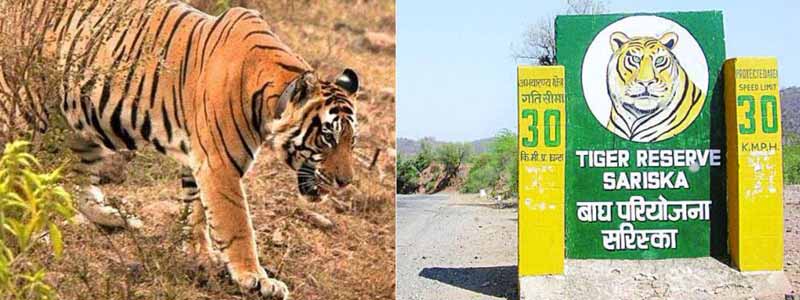
Sariska Tiger Reserve
Location: Alwar district
Highlights: This reserve is known for its population of tigers, leopards, and numerous bird species. It also has historical sites like the Kankwari Fort. The Aravalli hills provide a picturesque backdrop to the wildlife spotting experience.
Sariska Tiger Reserve, located in the Alwar district of Rajasthan, spans approximately 866 square kilometers and is part of the Aravalli Range. Originally established as a wildlife sanctuary in 1955, it was designated a tiger reserve in 1978 under Project Tiger. The reserve is renowned for its Bengal tiger population, which has been successfully revived through a well-documented relocation program after local extinction in the early 2000s.
The diverse landscape of Sariska includes dry deciduous forests, rocky hills, grasslands, and scrub-thorn arid forests. Besides tigers, the reserve is home to a variety of wildlife such as leopards, hyenas, jackals, chital, sambar deer, wild boars, and rhesus macaques. Bird enthusiasts can spot species like peafowls, partridges, quails, sand grouse, and the endangered Indian eagle-owl.
A notable feature of Sariska is the presence of ancient temples, forts, and palaces within its boundaries. The 10th-century Neelkanth Mahadev Temple and the ruins of the Kankwari Fort add a historical dimension to the natural beauty of the reserve. The reserve also contains the Sariska Palace, a former royal hunting lodge now serving as a hotel.
Visitors can explore Sariska through jeep safaris, which provide opportunities to witness the wildlife in their natural habitat. The best time to visit is between October and March when the weather is pleasant, and wildlife sightings are more frequent. Sariska Tiger Reserve, with its blend of history and natural beauty, offers a unique and enriching experience for nature and wildlife enthusiasts, Top 6 Wildlife Destinations in Rajasthan.
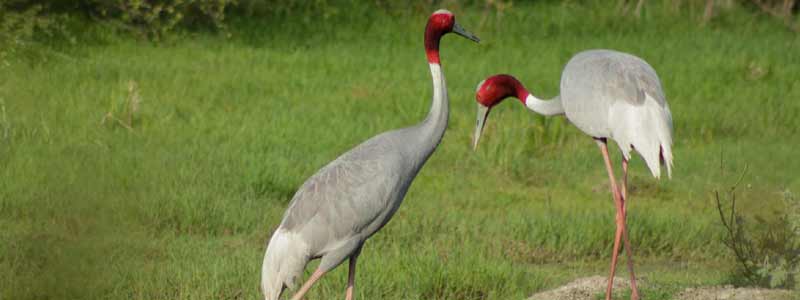
Keoladeo National Park (Bharatpur Bird Sanctuary)
Location: Bharatpur
Highlights: A UNESCO World Heritage Site, this park is a paradise for bird watchers, especially during the migratory season when thousands of birds, including the Siberian crane, visit the park. It also hosts various mammals and reptiles.
Keoladeo National Park, also known as Bharatpur Bird Sanctuary, is a renowned avian sanctuary located in Bharatpur, Rajasthan. Spanning about 29 square kilometers, this UNESCO World Heritage Site is one of the world’s most significant bird breeding and feeding grounds. Established in 1982, Keoladeo attracts ornithologists and bird enthusiasts from across the globe.
The park is named after the Keoladeo (Shiva) temple located within its boundaries. It features diverse habitats including wetlands, woodlands, grasslands, and swamps, creating a haven for over 370 bird species. During the winter months, the sanctuary becomes a temporary home to a multitude of migratory birds from regions like Siberia, Central Asia, and Europe. Notable among these are the Siberian crane, greater flamingo, common teal, and painted stork, Top 6 Wildlife Destinations in Rajasthan.
Keoladeo is also home to a variety of mammals, reptiles, and amphibians. Animals such as spotted deer, nilgai (blue bull), wild boar, and golden jackal can be spotted within the park. Reptilian inhabitants include the Indian python and various turtle species.
Visitors can explore the park through guided tours on foot, cycle rickshaws, or boats during the monsoon season when the water levels are high. The best time to visit is from October to March, coinciding with the arrival of migratory birds. The combination of its rich biodiversity, historical significance, and serene landscapes makes Keoladeo National Park a must-visit destination for nature lovers and bird watchers.
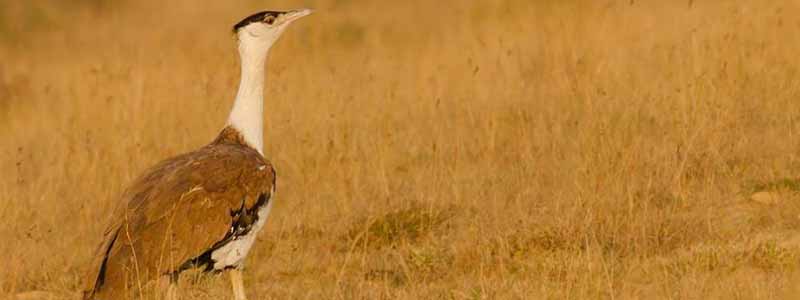
Desert National Park
Location: Jaisalmer
Highlights: This park represents the unique desert ecosystem of the Thar Desert. It is home to the Great Indian Bustard, an endangered bird species, along with desert foxes, blackbucks, and various reptiles.
Desert National Park, located near Jaisalmer in Rajasthan, is a remarkable example of the Thar Desert ecosystem. Spanning over 3,162 square kilometers, this park is one of the largest national parks in India. It was established in 1980 to protect the fragile desert environment and its unique biodiversity.
The park’s landscape is characterized by rolling sand dunes, rugged rocky terrain, salt lake bottoms, and fixed dunes. Despite the harsh conditions, Desert National Park supports a variety of flora and fauna adapted to the arid climate. One of the park’s most iconic residents is the critically endangered Great Indian Bustard, a large, ground-dwelling bird that symbolizes the park’s conservation efforts.
In addition to the Great Indian Bustard, the park is home to other bird species such as the sandgrouse, partridges, bee-eaters, larks, and vultures. Migratory birds like the houbara bustard also visit the park during the winter. Mammalian inhabitants include the desert fox, Bengal fox, wolf, and chinkara (Indian gazelle).
Fossil evidence of dinosaurs, dating back millions of years, adds a paleontological dimension to the park’s significance. Visitors can explore the park through guided jeep safaris, which offer a chance to witness its unique wildlife and stunning desert landscapes. The best time to visit is between October and March when the weather is cooler, Top 6 Wildlife Destinations in Rajasthan.
Desert National Park, with its vast expanse and rich biodiversity, offers a unique glimpse into the resilient life forms that thrive in the desert’s extreme conditions.
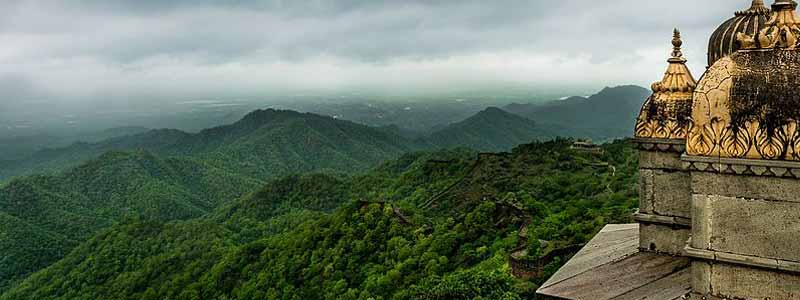
Kumbhalgarh Wildlife Sanctuary
Location: Near Kumbhalgarh Fort, Rajsamand district
Highlights: Surrounding the historic Kumbhalgarh Fort, this sanctuary is known for its diverse wildlife, including leopards, wolves, hyenas, and the Indian sloth bear. It also has a rich variety of birdlife.
Kumbhalgarh Wildlife Sanctuary, located in the Rajsamand District of Rajasthan, spans an area of approximately 578 square kilometers around the majestic Kumbhalgarh Fort. Established in 1971, the sanctuary stretches across the rugged terrain of the Aravalli Range, offering a stunning blend of natural beauty and historical significance.
The sanctuary’s diverse habitats include dense forests, grasslands, and rocky outcrops, supporting a rich variety of flora and fauna. Among its notable wildlife are leopards, sloth bears, wolves, hyenas, jackals, and various species of deer such as sambar, chital, and nilgai (blue bull). The Indian hare and the jungle cat are also commonly sighted, Top 6 Wildlife Destinations in Rajasthan.
Kumbhalgarh Wildlife Sanctuary is a haven for bird watchers, with over 200 bird species inhabiting the area. Notable birds include the grey junglefowl, peacocks, doves, parakeets, golden orioles, and white-breasted kingfishers. The sanctuary also serves as a migratory route for various birds during the winter months.
One of the unique features of the sanctuary is the opportunity for visitors to experience it on foot, through trekking, or horseback. These treks provide an intimate way to explore the rich biodiversity and scenic landscapes. The sanctuary is especially vibrant during the monsoon season when the vegetation is lush and wildlife is more active.
Visiting Kumbhalgarh Wildlife Sanctuary offers a perfect blend of adventure and tranquility, making it a must-visit destination for nature enthusiasts and history buffs alike. The best time to visit is between October and March, when the weather is pleasant and conducive for wildlife spotting.
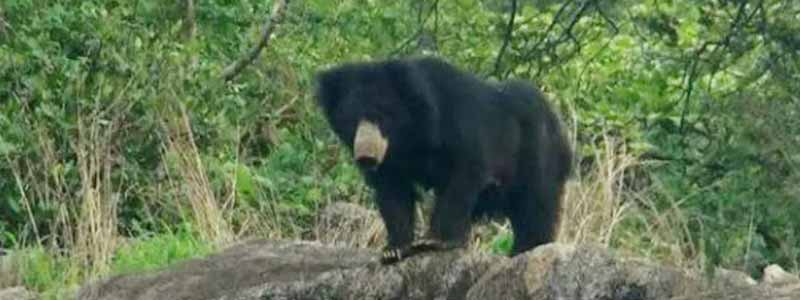
Mount Abu Wildlife Sanctuary – Top 6 Wildlife Destinations in Rajasthan
Location: Mount Abu
Highlights: Situated in the Aravalli range, this sanctuary is known for its scenic beauty and diverse flora. Wildlife includes leopards, sambhar deer, and a variety of bird species. The sanctuary is also known for its orchids and other rare plants.
Mount Abu Wildlife Sanctuary, located in Rajasthan’s only hill station, spans around 288 square kilometers along the Aravalli Range. Established in 1960, the sanctuary is renowned for its lush green landscapes, diverse flora, and fauna, and the cool climate of Mount Abu, which contrasts sharply with the arid plains of Rajasthan.
The sanctuary’s terrain includes dense forests, rocky ravines, and tranquil lakes, providing a rich habitat for a variety of wildlife. Key animal species found here include leopards, sloth bears, wild boars, sambar deer, chinkara, and langurs. The Indian pangolin and the giant squirrel are some of the more elusive residents.
Mount Abu Wildlife Sanctuary is a bird watcher’s paradise, boasting over 250 bird species. Notable birds include the grey junglefowl, peacocks, green avadavat, and the rare and endangered green munia. The sanctuary’s floral diversity is equally impressive, with over 820 species of plants, including numerous orchids, roses, and medicinal plants.
The sanctuary also offers panoramic views of the surrounding Aravalli Range and the plains below. Visitors can explore the sanctuary through various trekking routes, providing opportunities to experience its natural beauty and spot wildlife up close. The best time to visit is from October to March when the weather is cool and the chances of spotting wildlife are higher Top 6 Wildlife Destinations in Rajasthan.
Mount Abu Wildlife Sanctuary, with its serene environment and rich biodiversity, is a perfect destination for nature lovers and adventure enthusiasts seeking a refreshing retreat in Rajasthan.








